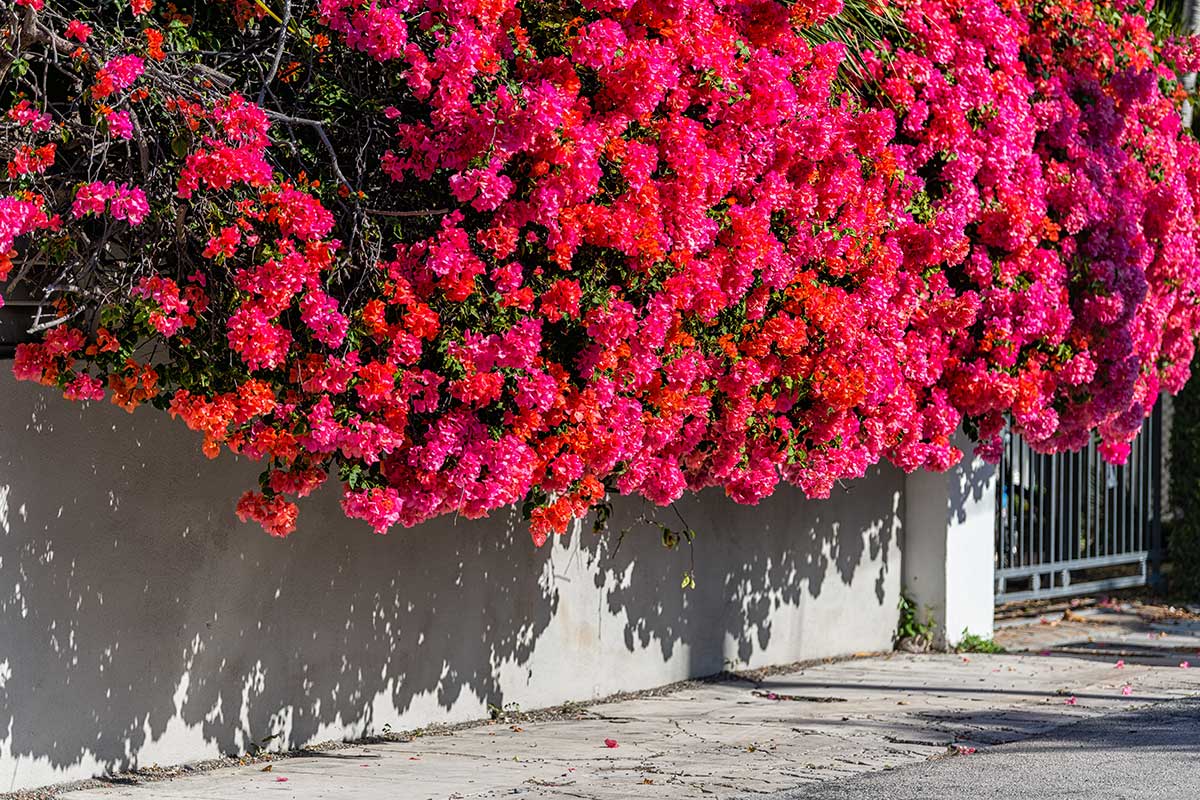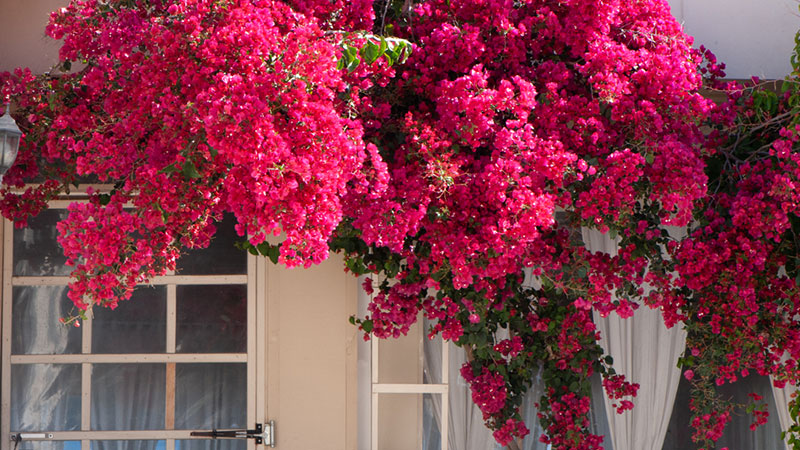
Bougainvilleas (Bougainvillea spp.) are normally grown for their colorful blooms that are actually not flowers at all. In fact, these “blooms” are modified leaves known as bracts. The bracts, which are the colorful part of the plant, encase the actual flowers of the bougainvilleas, which are small and white.
No matter what you call these bright areas of the plant, many gardeners have experienced issues with their bougainvilleas producing the vibrant bracts that they desire.
Thankfully, there are tips you can implement to help encourage this cheerful plant to bloom.
Location, Location, Location
Bougainvillea is a sun-loving plant that requires at least 6 hours of direct sunlight every day. If it isn’t receiving this amount of sun, then the plant cannot produce blooms, and its overall health will suffer.
If your plant isn’t blooming during the summer months, check to ensure it is getting full sun. If it isn’t, you may have to transplant it to a sunnier spot in your garden.

Protect It From Frost
Bougainvillea are hardy in USDA plant hardiness zones 9 to 11. While they can typically handle a light freeze just fine, a deeper freeze can kill its roots. Without those roots, the plant cannot survive, let alone produce blooms. If you live outside of those hardiness zones, the bougainvillea will need to be grown in a pot and moved inside during the colder months.
Make Sure They Get Rest
Bougainvillea are hard-working plants that require a dormant, or resting, period in order to stay healthy, strong, and produce blooms.
This period naturally occurs during the winter when the nights are longer and the temperatures are lower.
If, however, you bring the plant indoors during the winter, you will need to mimic this resting period.
This can be done by placing the plant in a dark area of your home that isn’t heated and won’t get light during the evening hours.

Give It Food
During the growing season, the bougainvillea will benefit from a bit of fertilizer to help strengthen the plant and encourage blooms.
Feed bougainvillea growing in the ground with a balanced slow-release granular fertilizer. For bougainvillea growing in pots, choose a liquid fertilizer and apply at half its strength.
A good general rule of thumb is to apply the fertilizer once a month during the plant’s growing season, which starts in the spring and continues to midsummer.
Do Some Pruning and Some Pinching
Pruning and pinching the bougainvillea will help to get the plant producing more branches, and thus more blooms. Most bougainvillea do well with regular pruning. If, however, you want to aggressively prune the plant to decrease its size, make sure to wait until the plant has finished blooming, which is typically in late fall.
After this time, refrain from pruning again until after the last frost in spring, but before the plant starts to produce new buds.
Pruning Tip: To encourage growth at the top of the plant, cut off suckers forming at the base of the plant.
The Size of the Pot is Important
For bougainvillea growing in a container, the size of that pot can have a major impact on whether or not the plant blooms.
For most plants, growing in a larger pot is usually better than a smaller one, since too small of a pot can lead to it becoming root bound.
Bougainvilleas, however, are a bit different and actually produce more blooms when planted in pots where their roots are a little crowded.
If your bougainvillea is a smaller plant growing in a larger pot, consider repotting it in a container that is a bit smaller.




